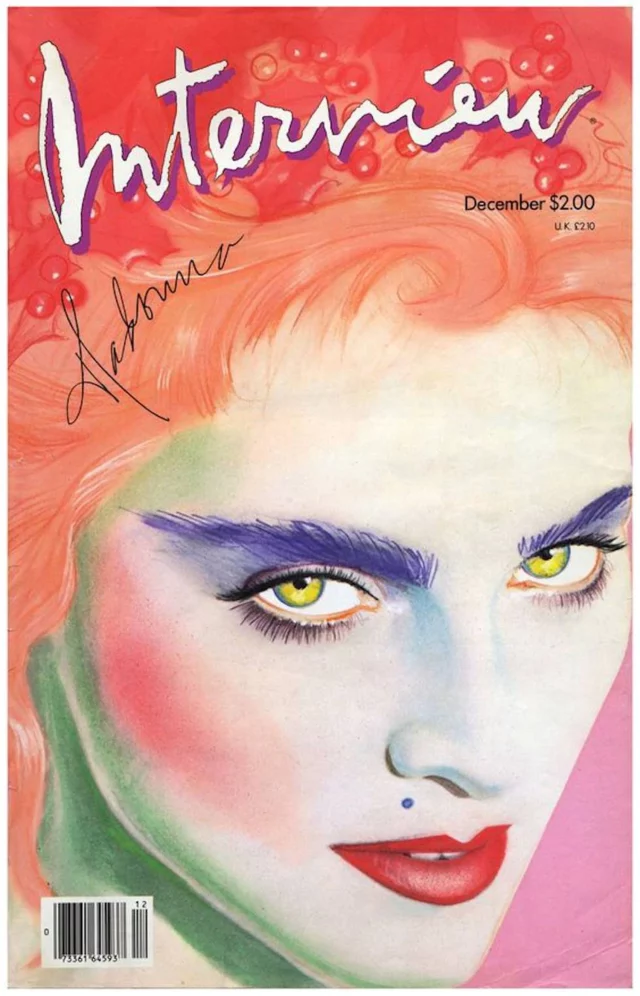4 keys to understanding why Andy Warhol was a communications genius 60 years ago
Andy Warhol (Pittsburgh, 1928 – New York, 1987) is one of the most influential artists of the 20th century. The founder of pop art was a multifaceted figure like few others, as he experimented in a multitude of fields and formats (painting, photography, film and fashion, among others) and strove to maintain his status in the public sphere, aware of his importance, during the almost 30 years of his career.
A few weeks ago The Andy Warhol Diaries was released, a docuseries to discover a Warhol who goes far beyond his famous Campbell’s soup. In the media, he not only knew how to make his place for himself; he was also able to anticipate many axioms that are still present today. “I never read I just look at pictures” is one of his best-known phrases, uttered in a society that did not know smartphones, let alone Instagram, and which served as a standard-bearer for his way of understanding the world even at that time.
Interview, its own magazine
Warhol founded Interview magazine together with journalist John Wilkok in 1969 as another branch of his artistic universe. While the most recognisable faces of the time, such as Bob Dylan, Mick Jagger and Truman Capote, were regular visitors to The Factory, the iconic studio that had become an epicentre of the New York avant-garde, the first pages of a magazine that survived until 2018 began to be published. The publication became an extension of the “Warholian” aesthetic, where the celebrities and cultural and artistic trends of the time set the pace.
In addition, advertising was not only a source of funding for the project, but also covered a large part of its content. The creation of Interview also meant the arrival of a new journalistic style, the particular formula of interviews, with a direct transcription of the character’s words. This became a way for Warhol to relate to certain personalities and to maintain contact with the most important spheres over the years.


Saturday Night Live and a show on MTV
Aware of the impact of the mass media, the Pittsburgh artist collaborated in numerous television programmes throughout his life. One of his most notable appearances was on Saturday Night Live, a format as famous now as it was in the 1980s, which he used to attend to ramble on about various topics, always with his unmistakable aesthetic and his particular sense of humour. “In the future everybody will be world famous for fifteen minutes” was precisely another of his most famous slogans, a prediction of the instantaneousness and virality that social networks would bring decades later. Under this premise, he also had his own show on MTV, called Andy Warhol’s Fifteen Minutes, a talk show hosted by himself in which, once again, he had as guests the celebrities of the moment.
Events even at the White House
His appearances at public events and fashionable venues also became a way to gain and maintain his visibility on the American scene. Being portrayed by Warhol became the socialite’s own desire. In spite of his groundbreaking style, he not only gained access to the upper circles; he also won their applause. Carolina Herrera or Elisabeth Taylor hung portraits signed by him on their walls, relationships that were born within the walls of the mythical nightclub Studio 54. But, from urban enclaves he jumped to the most glamorous events, as he visited the White House up to five times, with three different presidents, despite his well-known sympathies for the Democratic candidates.
In the 1980s, a strong trend of street art emerged, with names such as Jean-Michael Basquiat and Keith Haring. He writes in his diaries about an episode in which they attended the MTV awards together. As he tells it, a young Haring spent the evening wishing to be photographed by the press with the more veteran creator. Although anecdotal, this story is yet another example of the credit artists gave to their public relations. Warhol opened himself up to new trends in his efforts to remain at the top, and in turn, these new figures wanted to have the established painter by their side, a win-win that nurtured the status of both generations.


Influencer for Commodore computers
At the time, Commodore was a cutting-edge computer brand, a competitor of Apple, which wanted to demonstrate the artistic possibilities of its devices. To this end, Andy Warhol became a brand ambassador at an event to present the “revolutionary” product, where the artist could be seen recreating some of his most iconic works at the click of a mouse. Those works are now on display in the artist’s museum and are an example of his ongoing commitment to progress. Of course, he couldn’t have imagined what the world would be like now, but it’s worth thinking about Warhol turned influencer. Would he recreate his portraits through an Instagram filter, or start a challenge with his soup on TikTok?

In short, his legacy is enormous, but, in addition to his work, his figure also represented a revolutionary way of showing himself to the world. Some say that Warhol’s work was Warhol himself, and not just because he once exposed himself behind a screen, but because of his undeniable vision of how the media and public opinion worked, and of its importance in highlighting his work and his artistic quality.
